Joy and Eric’s folk music and dance background
Joy's early history written by Joy
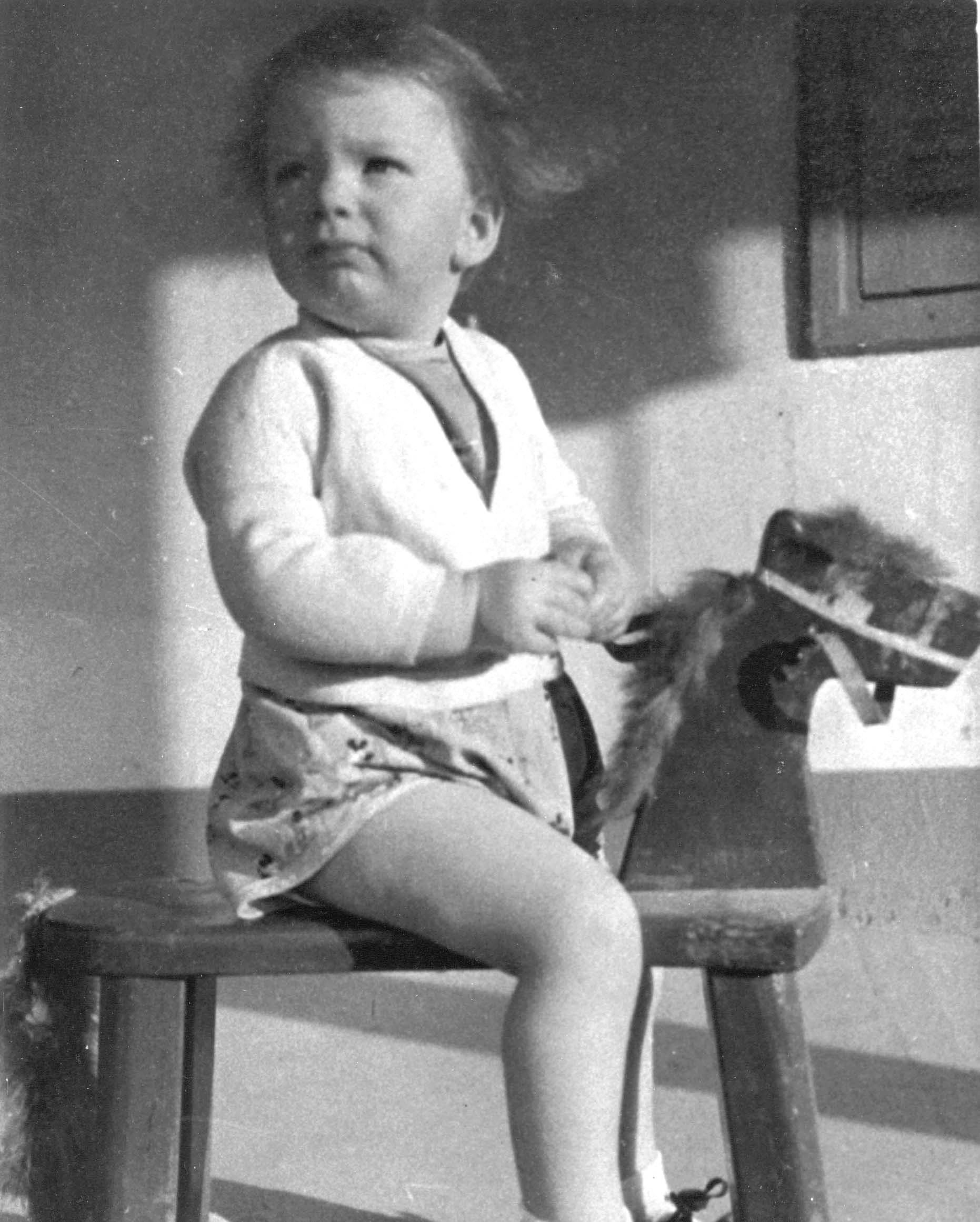 Joy has always loved singing from a child. Some of my earliest memories are of sitting on the swing that my father built me when I was under school age, about four years, and singing singing and swinging. I remember hoping that I would not forget these songs when I was older. I remember the first National Song Book come into being . Joy has always loved singing from a child. Some of my earliest memories are of sitting on the swing that my father built me when I was under school age, about four years, and singing singing and swinging. I remember hoping that I would not forget these songs when I was older. I remember the first National Song Book come into being .
[Now try and persuade Joy to say or write something more coherent!]
Eric's early history written by Eric
 Eric's early folk history was entirely on the dance side. Eric's mother Amy ran a folk dance club in Twickenham. She had danced in Devon prior to the war in her youth. Eric went with his brother Owen to her weekly club when we were young teenagers. The members were mostly ladies (after the war there were many ladies on their own), and the programme included fairly difficult dances such as those from the Playford books. For music they worked from 78 rpm records of course. There were some dances for which they could not find records, so one lady who had a spare small accordion gave it to me and I was told “Please play the one that goes like this....”, and hummed the tune. I'd had no musical history before that, but then spent 2 years learning and watching my Mathematics teacher Mr Blandford. He played accordion for the school Country Dancing. I was amazed at what he did on the buttons with his left hand. After a couple of years I managed to play for a dance without breaking down. As well as the weekly club, Mum would rent a large school hall and run a public dance once or twice a year with visiting caller and band. As mummy's boy I was allowed to sit in at the back of the bands and absorb their tunes. Living near to London, Mum and I were regular visitors to the EFDSS (English Folk Dance and Song Society) headquarters at Cecil Sharp House near Regent's Park, and I met other nationally known musicians and dancers there. Eric's early folk history was entirely on the dance side. Eric's mother Amy ran a folk dance club in Twickenham. She had danced in Devon prior to the war in her youth. Eric went with his brother Owen to her weekly club when we were young teenagers. The members were mostly ladies (after the war there were many ladies on their own), and the programme included fairly difficult dances such as those from the Playford books. For music they worked from 78 rpm records of course. There were some dances for which they could not find records, so one lady who had a spare small accordion gave it to me and I was told “Please play the one that goes like this....”, and hummed the tune. I'd had no musical history before that, but then spent 2 years learning and watching my Mathematics teacher Mr Blandford. He played accordion for the school Country Dancing. I was amazed at what he did on the buttons with his left hand. After a couple of years I managed to play for a dance without breaking down. As well as the weekly club, Mum would rent a large school hall and run a public dance once or twice a year with visiting caller and band. As mummy's boy I was allowed to sit in at the back of the bands and absorb their tunes. Living near to London, Mum and I were regular visitors to the EFDSS (English Folk Dance and Song Society) headquarters at Cecil Sharp House near Regent's Park, and I met other nationally known musicians and dancers there.
Mum's folk dance group had a number of eminent visitors including Patrick Shuldham-Shaw, Lesley Nicols and others. Pat Shaw was a composer of dances and tunes and he would try new dances out on my mother's group; he played a huge 140 bass accordion. One particular dance and tune he invented for my mother is called Twickenham Ferry. John Glaister (a local morris man) created a dance and named it after my mother, Mrs Foxley’s Fancy. It's one of the dances in the EFDSS book "Callers Choice 1" edited by Nibs Matthews.
At the age of 15 it was a natural step for me to join the Thames Valley Morris Men based in Kingston. Their Squire Dr Christopher Penton gave me much excellent advice. He drove me in his MG sports car and introduced me to traditional players such as William Kimber and Jinky Wells. I was made to play in front of William Kimber, who said "Keep it snappy". Christopher's advice to me when I said of one tune "Why does everyone play it this way when it sounds better this way?" was "immerse yourself in the tradition, and then feel free to develop it". In the summer of 1956 with Thames Valley Morris I attended a national meeting of the Morris Ring at Abingdon. There I met the Foresters Morris Men from Nottingham, who invited me to join them when I went up to Nottingham later that year.
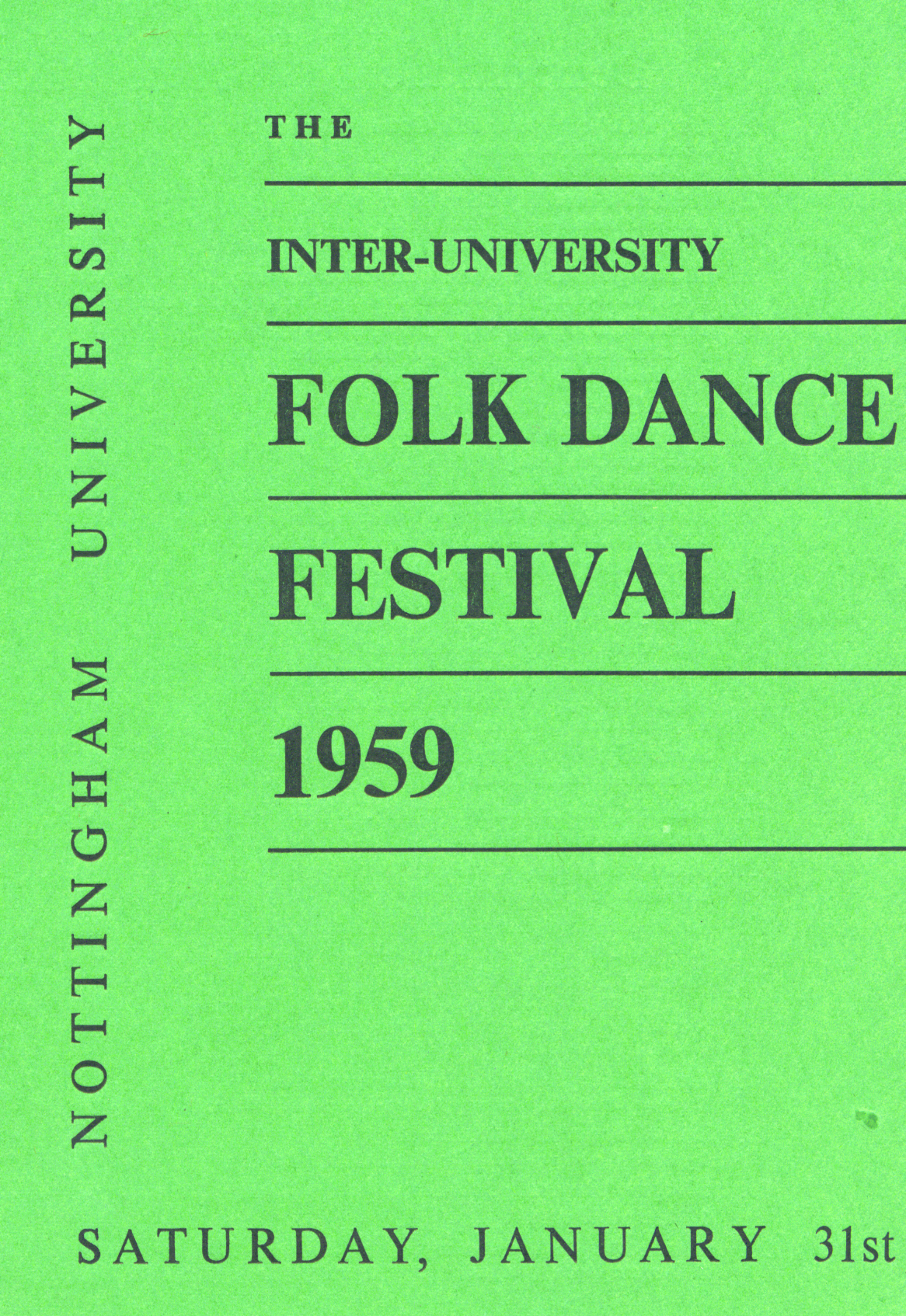 Now we come to October 1956 when I came up to Nottingham University and of course I went to the student Folk Dance Society and of course I took my accordion. There I met a young lady called Joy who together with the president of folk dance society David Samson, had been on an EFDSS course training up people to be able to MC dances. Joy took folk dance evenings at local youth clubs, and thought it would be better to have live music rather than records. So started our relationship! I the meantime I took my accordion to local dances and started playing in with superb Irish fiddler Kevin Briggs, who played for most of the local EFDSS dances. His drummer was Kath Woods, who worked in the University of Nottingham catering department. I was president of the University Folk Dance Society for two years, and in 1959 orgainsed the national inter-university folk dance gathering to be at Nottingham. We had 800 students from all over the UK at university for the weekend. Now we come to October 1956 when I came up to Nottingham University and of course I went to the student Folk Dance Society and of course I took my accordion. There I met a young lady called Joy who together with the president of folk dance society David Samson, had been on an EFDSS course training up people to be able to MC dances. Joy took folk dance evenings at local youth clubs, and thought it would be better to have live music rather than records. So started our relationship! I the meantime I took my accordion to local dances and started playing in with superb Irish fiddler Kevin Briggs, who played for most of the local EFDSS dances. His drummer was Kath Woods, who worked in the University of Nottingham catering department. I was president of the University Folk Dance Society for two years, and in 1959 orgainsed the national inter-university folk dance gathering to be at Nottingham. We had 800 students from all over the UK at university for the weekend.
Our joint folk history
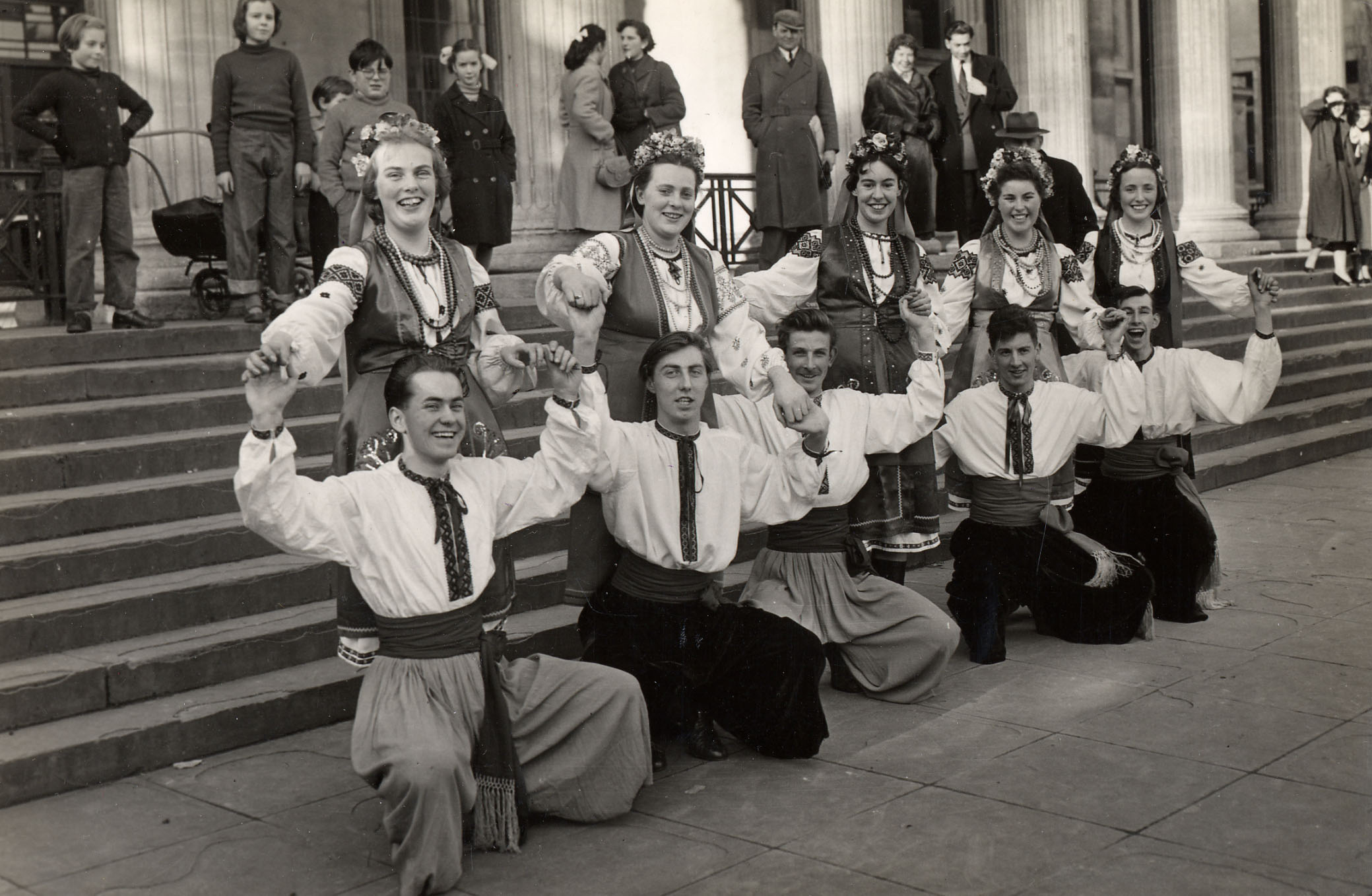 Joy and I were married in 1960 and lived in a first floor flat near the Goose Fair site off Gregory Boulevard. It had a large front room, in which we held a weekly folk song club. Among the attendees were Harry Constantine, Spike Woods, John Davis, Bill Sergeant and Anne Briggs. The club continued when we moved to a house in West Bridgford in 1962, but stopped when we moved to Dunkirk in 1967. Through the university folk dance society we met the local Ukrainian cossack dance team, and danced out, played and socialised with them. Eric danced with the university Ukrainian team at a Bristol University gathering, right Joy and I were married in 1960 and lived in a first floor flat near the Goose Fair site off Gregory Boulevard. It had a large front room, in which we held a weekly folk song club. Among the attendees were Harry Constantine, Spike Woods, John Davis, Bill Sergeant and Anne Briggs. The club continued when we moved to a house in West Bridgford in 1962, but stopped when we moved to Dunkirk in 1967. Through the university folk dance society we met the local Ukrainian cossack dance team, and danced out, played and socialised with them. Eric danced with the university Ukrainian team at a Bristol University gathering, right
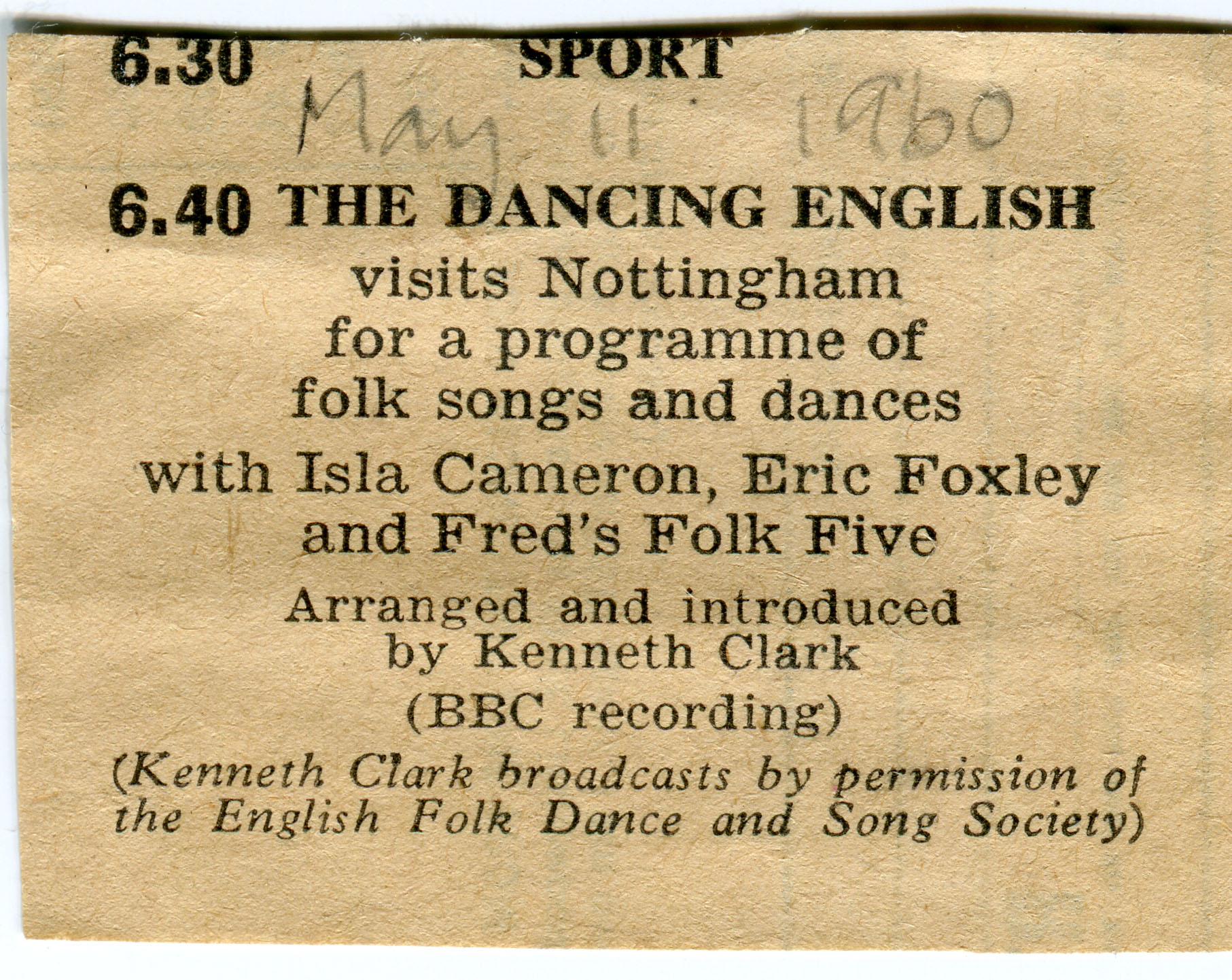 In 1960 Kevin was invited to organise a band to play for some of the weekly BBC Home Service programmes “The Dancing English” run by Kenneth Clark of the EFDSS Birmingham office. When it came to the first broadcast they insisted that we have a name for the band, and on the spur of the moment we became "Freds Folk Five". For the BBC recordings Kevin roped in some competent extras. The line-up for all the broadcasts was five of us; Kevin Briggs (fiddle, leader), Eric Foxley (accordion), Kath Woods (snare drum), Stuart Woodhouse (double bass, a professional musician) and Sam Brown (guitar, didn't like changing chords more than once in a bar). For just one broadcast from Clifton College of Education (now part of Nottingham Trent university) In 1960 Kevin was invited to organise a band to play for some of the weekly BBC Home Service programmes “The Dancing English” run by Kenneth Clark of the EFDSS Birmingham office. When it came to the first broadcast they insisted that we have a name for the band, and on the spur of the moment we became "Freds Folk Five". For the BBC recordings Kevin roped in some competent extras. The line-up for all the broadcasts was five of us; Kevin Briggs (fiddle, leader), Eric Foxley (accordion), Kath Woods (snare drum), Stuart Woodhouse (double bass, a professional musician) and Sam Brown (guitar, didn't like changing chords more than once in a bar). For just one broadcast from Clifton College of Education (now part of Nottingham Trent university) 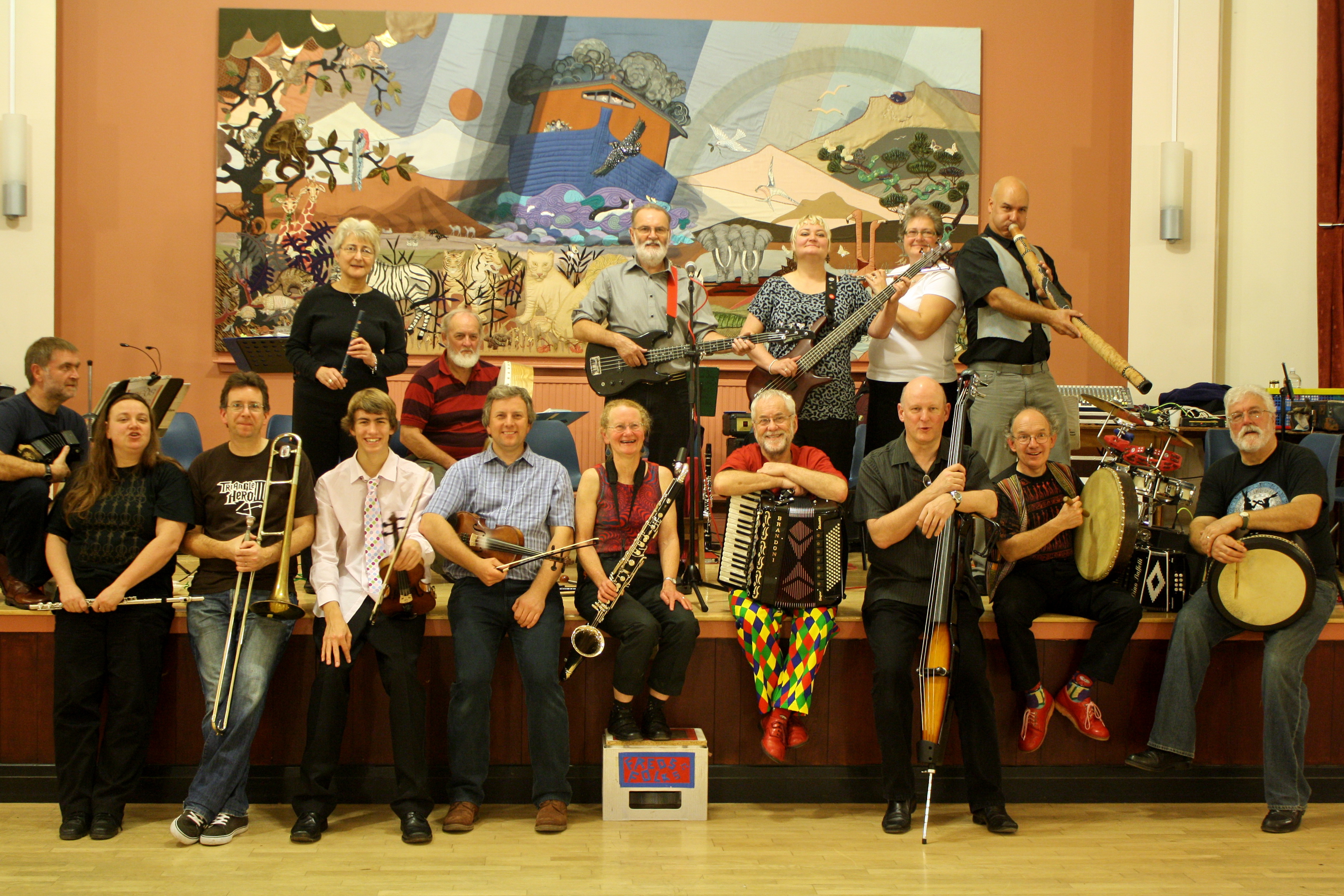 we were augmented by David Renouf on piano - he was a music lecturer there, authour with Edwin Smith of a series of music books for schools, "Approach to Music", which contained as examples many pieces of folk music. The first two BBC programmes were under the auspices of the "Third programme", the equivalent of Radio 3 now. After one run through the producer said "I don't like that F# minor chord in the 4th bar of ..". He knew his stuff! Later programmes weren't as well mixed. Each broadcast included an invited soloist, among whom were Rosemary Redpath, Nadia Catthouse, Isla Cameron, and members of the Tollerton Plough Play men. Kevin Eric and Kath continued to play for many dances in the Midland area from Worcester to Bradford to York to Skegness. Since then Freds Folks has gradually changed membership over the years. Eric is the only remaining original member. We used to have an annual charity gig with some of the retired members coming to Nottingham for the weekend, hence the photo at the right with 16 members! we were augmented by David Renouf on piano - he was a music lecturer there, authour with Edwin Smith of a series of music books for schools, "Approach to Music", which contained as examples many pieces of folk music. The first two BBC programmes were under the auspices of the "Third programme", the equivalent of Radio 3 now. After one run through the producer said "I don't like that F# minor chord in the 4th bar of ..". He knew his stuff! Later programmes weren't as well mixed. Each broadcast included an invited soloist, among whom were Rosemary Redpath, Nadia Catthouse, Isla Cameron, and members of the Tollerton Plough Play men. Kevin Eric and Kath continued to play for many dances in the Midland area from Worcester to Bradford to York to Skegness. Since then Freds Folks has gradually changed membership over the years. Eric is the only remaining original member. We used to have an annual charity gig with some of the retired members coming to Nottingham for the weekend, hence the photo at the right with 16 members!
Joy and Eric attended EFDSS courses at Chelsea College in Decembers, and at Barford in the summer. Since it is too tiring to dance all day and evening, such courses usually had folk singing sessions as well, and through these we started our folk singing interest. People such as Bert (AL) Lloyd were typical of the people we met. Eric also worked on committees of the English Folk Dance and Song Society, and produced a document for them of advice to musicians who wish to play for English folk dancing.
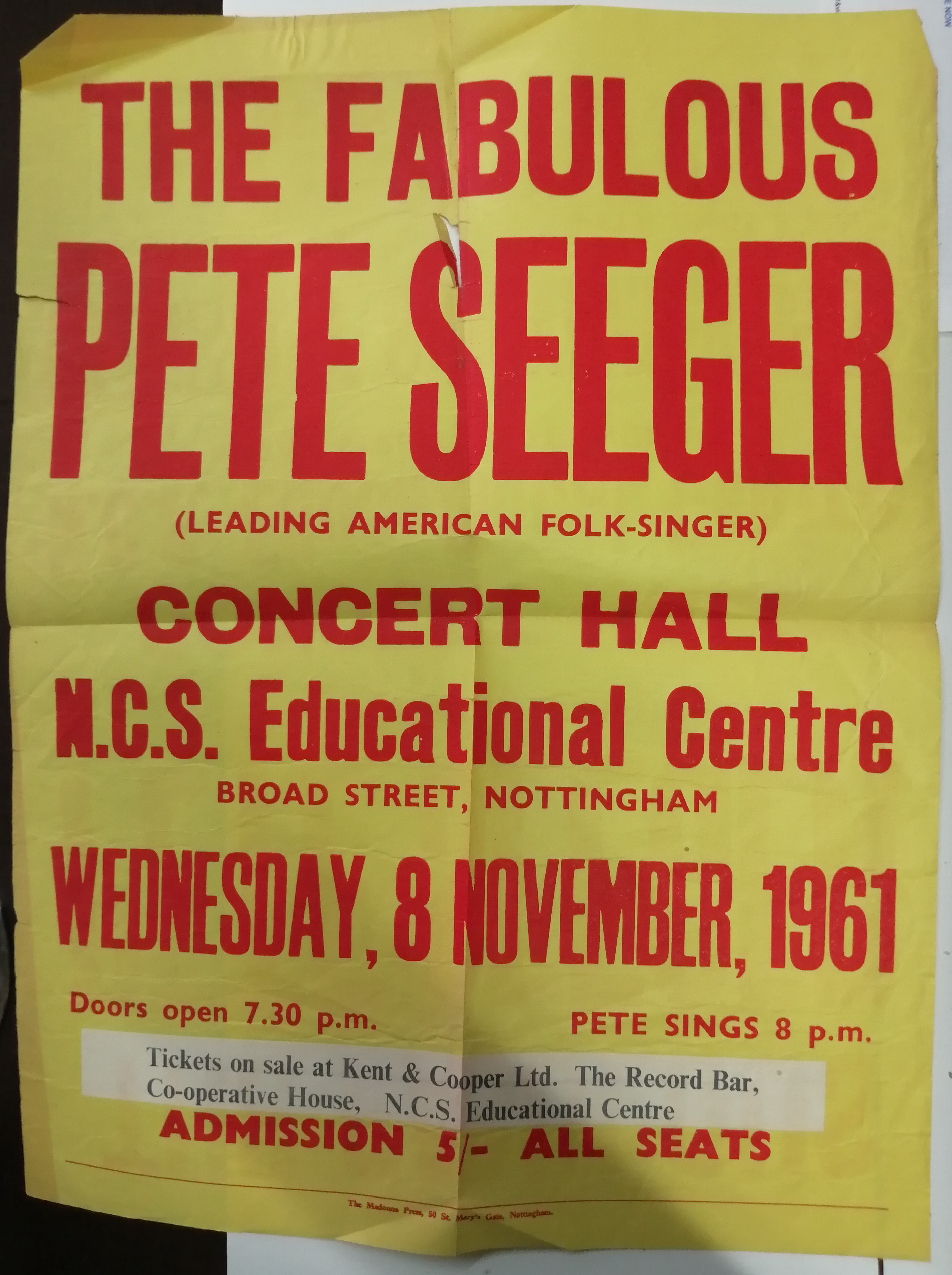 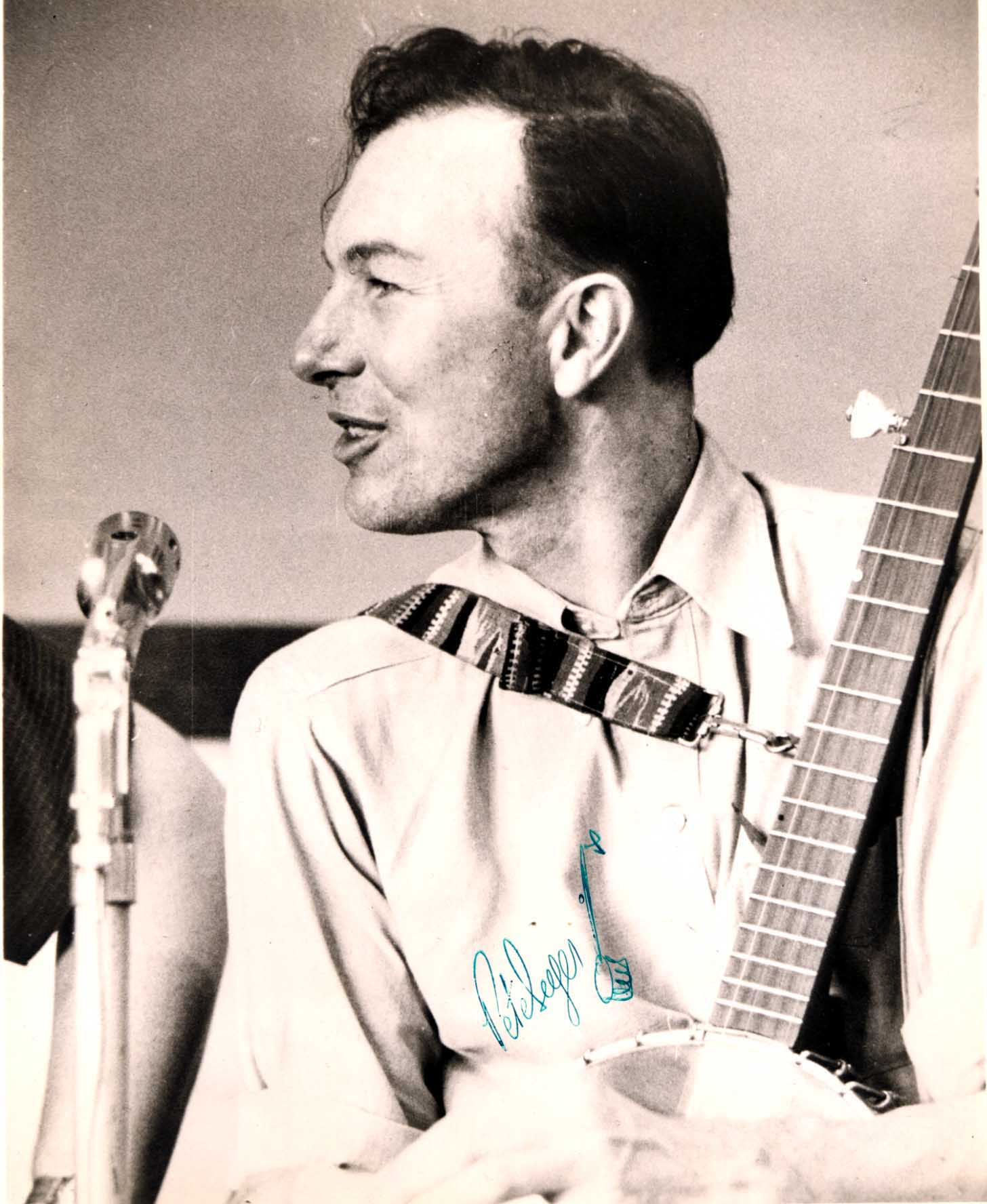 In 1962 we received a letter from Pete Seeger's agent suggesting he give a concert in Nottingham as part of a UK tour; the letter was addressed to "Joy & Eric Foxley, Nottingham, UK". We arranged a concert at the Co-op Theatre, he charged £50 fee, we collected £49 and 10 shillings in tickets. The Co-op provided the hall for free. In 1962 we received a letter from Pete Seeger's agent suggesting he give a concert in Nottingham as part of a UK tour; the letter was addressed to "Joy & Eric Foxley, Nottingham, UK". We arranged a concert at the Co-op Theatre, he charged £50 fee, we collected £49 and 10 shillings in tickets. The Co-op provided the hall for free.
As well as taking social dance with Joy as MC and Freds Folks as music, Joy and Eric are both involved in traditional dance teams. Joy dances with the "Greenwood Step Clog Dancers". Eric dances and plays for the Foresters Morris Men. For a number of years we organised tours with both of the teams to Brittany, performing in market places, and running socials (with Joy as MC in French) in the evening. We have also helped for 10 years with dances organised by Karen and Angus in Germany, with Joy as MC in German - quite multi-lingual!
For many years when I worked at the University of Nottingham, we would have students round to our house for a sing song on a Sunday evening twice a term as part of the Christian Association. In those days there were lots of protest songs as well as our usual English traditional ones and some heartily rendered spirituals. The maximum number of students attending was about 80, crammed into the living room and up the stairs. We had to open all the windows afterwards to clear the air. It was during one of these that Sydney Carter (well known for "Lord of the dance") visited. When asked about singing his songs he said "You change it as you wish, and make it your own."
For a while we ran a folk song club for young children in Beeston called "Young Folk". The club has now stopped, but the words of the songs we sang and some audio tracks are still on the website. We also, jointly with Ken Bramman, run monthly folk sessions in the "King Billy" pub in Sneinton, Nottingham, and there are song lyrics and recordings on that website.
As part of my work in the very early days of computers I became interested in using computers to analyse, harmonise and classify folk tunes. I devised a notation to type into the computer all the tunes I knew (about 1000 it ended up) and wrote programs to perform various tasks. I ended up presenting papers at serious music conferences (including one at Pierre Boulez's place IRCAM in Paris) and giving a lecture tour in the USA as "Honor lecturer in music analysis". At the music conferences most attendees were interested in classical music, I was the only one using folk music, so I was usually introduced as "Eric the Ethnoid".
 Joy has been very involved in the UK Asian dance scene since becoming interested in Indian dance, see below. Our great friend Bisakha Sarker of Chaturangan organised a number of ground-breaking international conferences on topics such as "Dance and dementia", "Dance and heritage" and "Dance and ageing". I helped with the website and papers, and spoke on ageing of course. After the closing address of one conference we went to the front of the lecture theatre and Joy got everyone dancing Circassian Circle with me almost hidden playing, great! There's nothing nicer than playing and being surrounded by dancers! Joy has been very involved in the UK Asian dance scene since becoming interested in Indian dance, see below. Our great friend Bisakha Sarker of Chaturangan organised a number of ground-breaking international conferences on topics such as "Dance and dementia", "Dance and heritage" and "Dance and ageing". I helped with the website and papers, and spoke on ageing of course. After the closing address of one conference we went to the front of the lecture theatre and Joy got everyone dancing Circassian Circle with me almost hidden playing, great! There's nothing nicer than playing and being surrounded by dancers!
Joy's Folk dance and song CV for schools
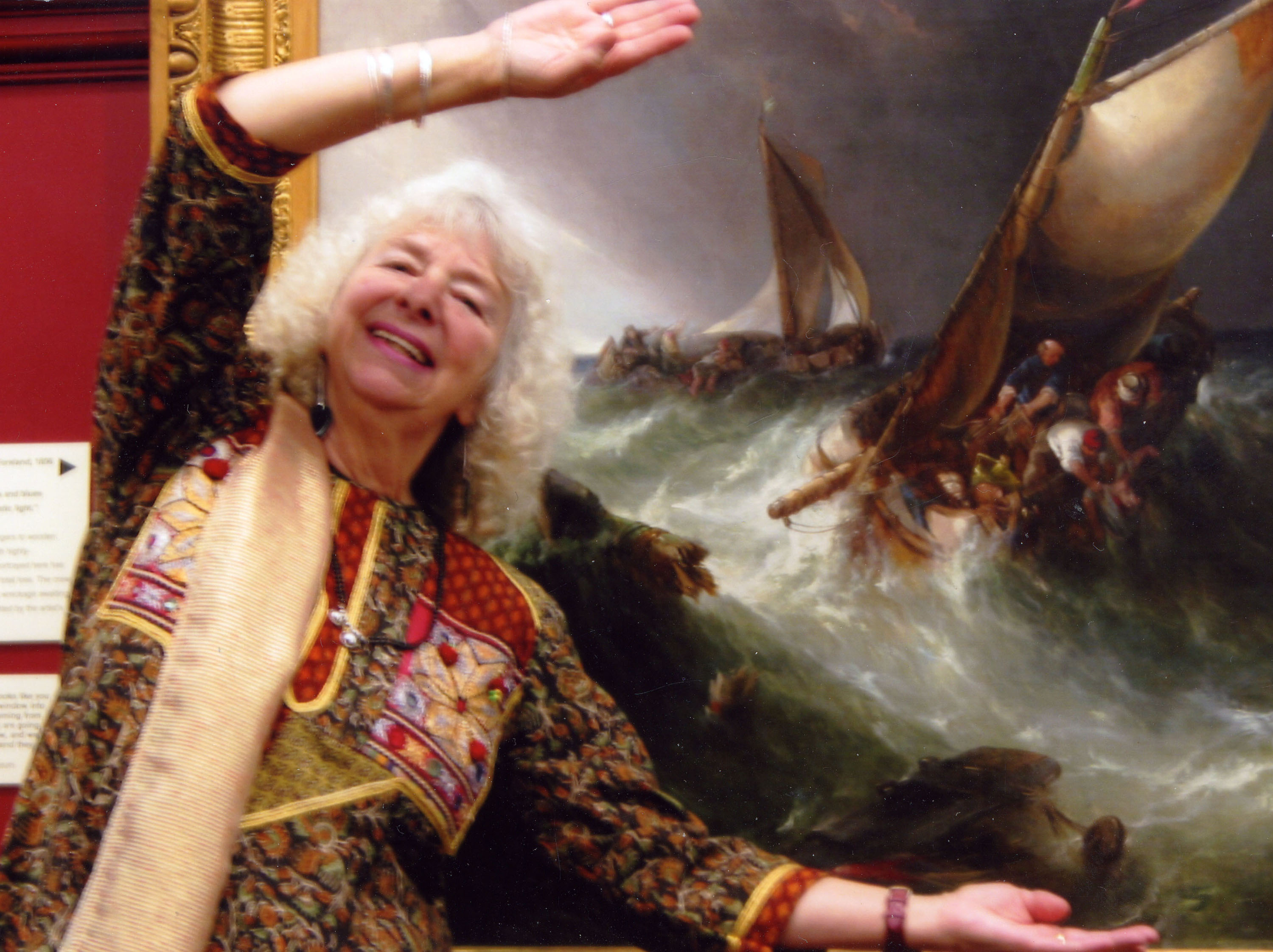 Joy Foxley is a qualified and experienced teacher, who taught for many years in a variety of primary schools in the Nottingham area. During that time as part of her extra-curricular activities she ran a number of in-service courses for teachers in English Folk Dance and Song, and taught children's dance teams. Joy Foxley is a qualified and experienced teacher, who taught for many years in a variety of primary schools in the Nottingham area. During that time as part of her extra-curricular activities she ran a number of in-service courses for teachers in English Folk Dance and Song, and taught children's dance teams.
She is an accomplished dance MC for British social dances or ceilidhs (she generally works with Freds Folks band run by Eric), as well as a folk singer and clog dancer. She has acted as dance MC in French and German when required.
Joy became interested in Indian dance in the 1970s, and started her Indian dance career under Nilima Devi at the Nilmani Kathak Kendra (now the Centre for Indian Classical Dance) in Leicester. After taking first year Kathak examinations there, she resigned her job as a primary school teacher, and went to India to further her Kathak dance. She studied in Baroda under Janaki Ben Damle, obtaining First Class certificates in both her third year and fourth year examinations. Since then she has extended her knowledge of Kathak with further visits for the study of Lucknowi tradition under the internationally famous Kumudini Lakhia, the celebrated dancer, choreographer and UNESCO representative, at her Kadamb centre for dance and music in Ahmedabad.
Since Joy's return to England, she conducts workshops on Kathak dance, combined with performances and exhibition material as appropriate, and takes adult classes in British folk dancing. She works also in co-operation with Bisakha Sarker at Chaturangan. She has given workshops in Nottingham, Chesterfield, Surrey, Middlesex, and for the ILEA in London. She is now specialising in storytelling with schools and adult groups as well as dancing. Joy has animated the Chota Hathi story (her own version of one of Rudyard Kipling's "Just So" stories with music specially composed by Atul Desai) in both English and German versions, and has written a kavita (poem dance) for the Hafiz the Stone Cutter story with music specially composed by Chris Davis.
Joy Foxley was born in Grantham and lives with her husband Eric in Nottingham. She has been involved, together with Eric, in English traditional dance, music and song since about 1954. Her Methodist background, plus experience of living in the diverse communities of Nottingham, have introduced her to a variety of cultures. 85 now, she started kathak classes with Nilima Devi at the Nottingham Hindu Temple in about 1982 – a colleague at the primary school at which she was teaching persuaded her to go to Indian dance classes starting there, when the other students were mostly teenagers. ‘It hooked me, it drew me in.’ Joy continued when the classes moved to Leicester. When in 1985 her husband said, ‘Do something special for your 50th birthday’, encouraged by Nilima, she resigned her teaching post and went to study dance in India. She joined Janaki Ben Damle’s school of kathak dance in Baroda, Gujarat, with her friend Catherine, staying for six months on her first trip. She went on to achieve distinctions in the state third and fourth year kathak exams. Janaki had died after Joy’s second trip, and in 1991 she went to study at Kumudini Lakhia’s Kadamb dance college in Ahmedabad, the first of three visits there.
In 1986, Joy became a peripatetic teacher and took classes in Indian culture and dance at schools all over the county, as well as sessions in libraries, colleges, and youth and other groups all over England and even in Germany (with her daughter-in-law interpreting). More recently she has helped in various places at events being run by Nilima Devi, and in the north west by Bisakha Sarker.
The roof space in her house has been converted to a dance studio with mirrors. Her classes continue at home when Covid permits; and she and Catherine go occasionally to Nilima Devi’s CICD for refresher lessons and new compositions. ‘I look forward to becoming competent and able!’.
The availability of classes clearly makes an important contribution to the happiness and well-being of many older women. The approach to performance, however, changes with age: those under 60 are happier to perform. Kirti, for example, says she loves performing and being part of a team, with the preparation, costume, make-up – and being shouted at by their teacher as if they were 12-year-olds. Smita feels performing is a good way of showing what one has learned, and she appreciates the encouragement. Sue, however, ‘can’t think of anything worse’; some older dancers don’t want to be letting the other dancers down. It is encouraging that some teachers are providing sessions for the over-50s or 60s. Several commented on how yoga, which has been incorporated by teachers in their classes, is enabling them to continue dancing as they grow older.
From proceedings of a 2010 conference on "Dance and dementia"
Joy Foxley has spent many years teaching, and her interest in dance and song from English-speaking countries and India makes her uniquely qualified to be an animateur in this area. Her interest in English dance and song is represented in the web sites for the Greenwood Step Clog Dancers and the Freds Folks Ceilidh Band. She and her husband Eric visit schools for sessions of singing or dancing. She first learnt Kathak-style Indian dance in Leicester under Nilima Devi at CICD, and then spent long periods in India, first under Janaki Damle at Baroda, then under Kumudini Lakhia at Kadamb in Ahmedabad. She uses stories and dance in schools and with community groups. Details can be found on her website of her "Chota Hathi" story as taught in both English and German schools (music by Atul Desai in Ahmedabad), and of the "Hafiz the Stonecutter" story book made by one group of school children. She has worked with Chaturangan on dance for older people.
Eric Foxley has been involved in British folk dance, song and music since 1950. He worked on committees of the English Folk Dance and Song Society, and produced a document for them of advice to musicians playing for dancing. He has organised many dance and music tours in Brittany, France, not attending festivals but contacting individual towns and villages and running social events and workshops as well as shows. A popular dance called "Mrs Foxley's Fancy" was composed in honour of his mother. He has travelled extensively with work in China, India, South-East Asia, Africa, Europe and America, and always looks for music and dance opportunities wherever he is. For ten years now he has been happily retired with not a minute to spare, mountain biking, hill walking, running a pottery, managing web sites for a modest fee, and running the Foresters Morris Men, the Greenwood Step Clog Dancers and Freds Folks Ceilidh Band.
Snail-mail to 31 Greenfield Street, Nottingham NG7 2JN, UK
Home landline phone 0115-9786858.
Mobile 07817 178 525.
e-mail us your thoughts to eric.foxley@gmail.com
Back to our website is at www.chezfred.org.uk |









